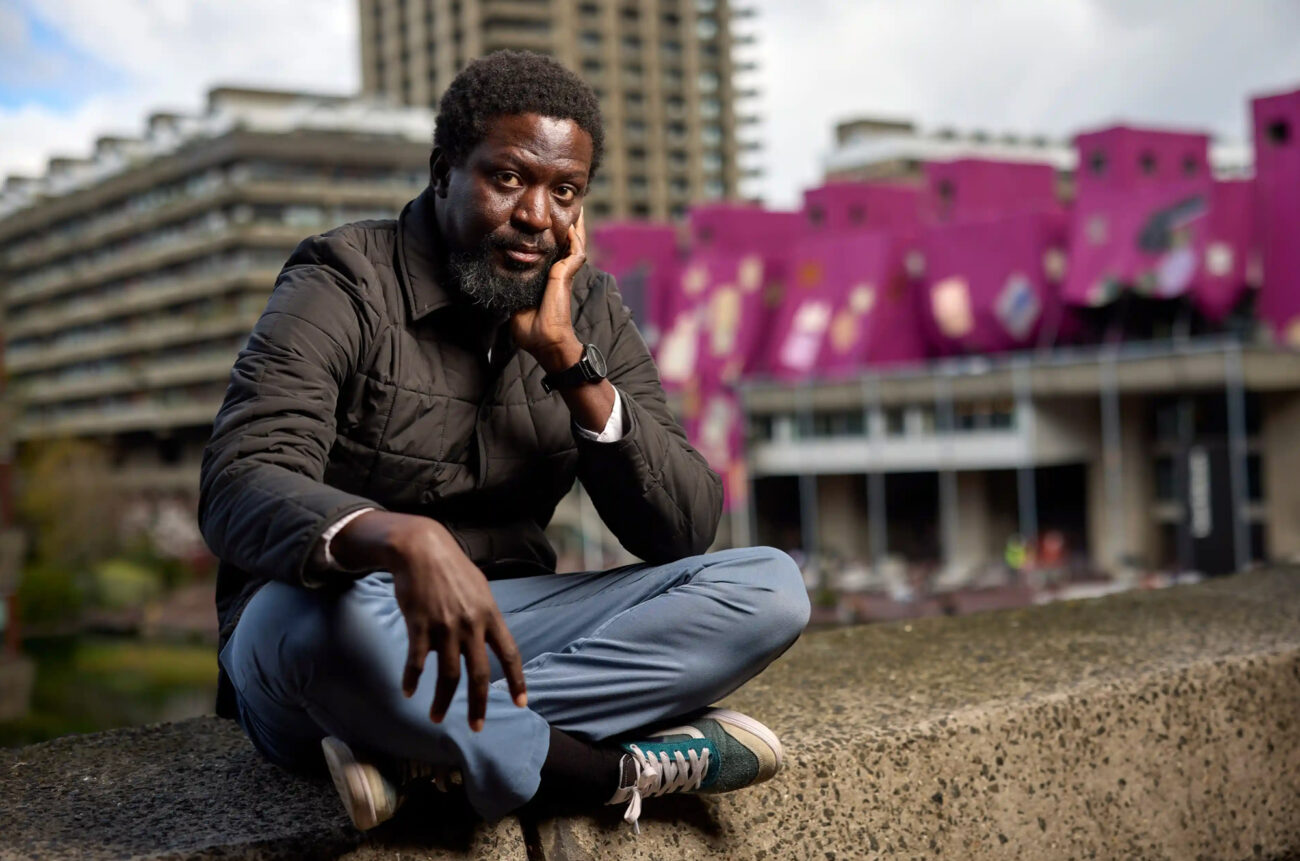Ibrahim Mahama is a master of transmutation— both material and community. Born in Tamale, Ghana in 1987, Mahama is now best known for his ability to rework and reimagine ordinary found materials into monumental installations and large-scale mixed media works that address themes of labor, migration, globalization and the socio-political history of Ghana and Africa at large. Often working collaboratively, Mahama employs ritualistic acts of sewing and enjoining to alternatively highlight and liberate materials from their former uses. In addition to his large-scale installations, Mahama also works across various mediums including sculpture, painting, photography and performance.
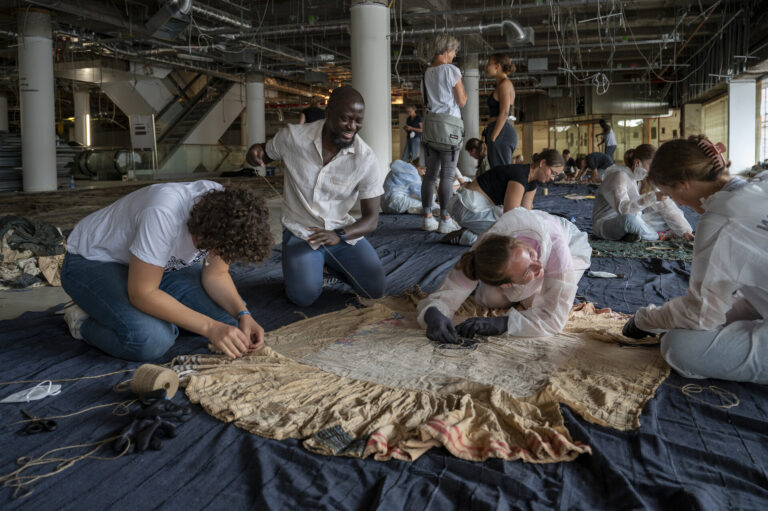
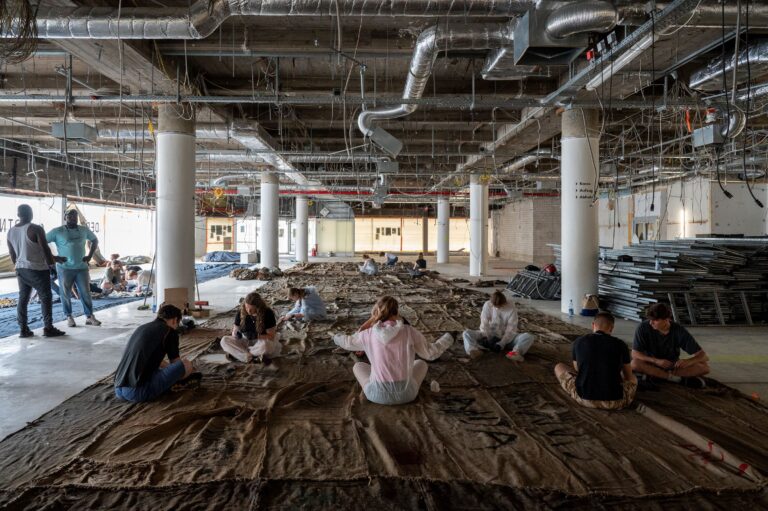
Some of Mahama’s most notable bodies of work involve covering architectural structures, such as buildings and walls, with jute sacks once used to transport goods like cocoa beans or charcoal in Ghana. Through their repurposing, the sacks—often still bearing traces of their previous use—are transformed into symbols of economic exchange and exploitation. Mahama explains, “I used jute sacks because for me the history of crisis and failure is absorbed into the material. Their history speaks of how global transactions and capitalist structures work. And because how their humbleness contrasts with the monumentality of the buildings they cover.”
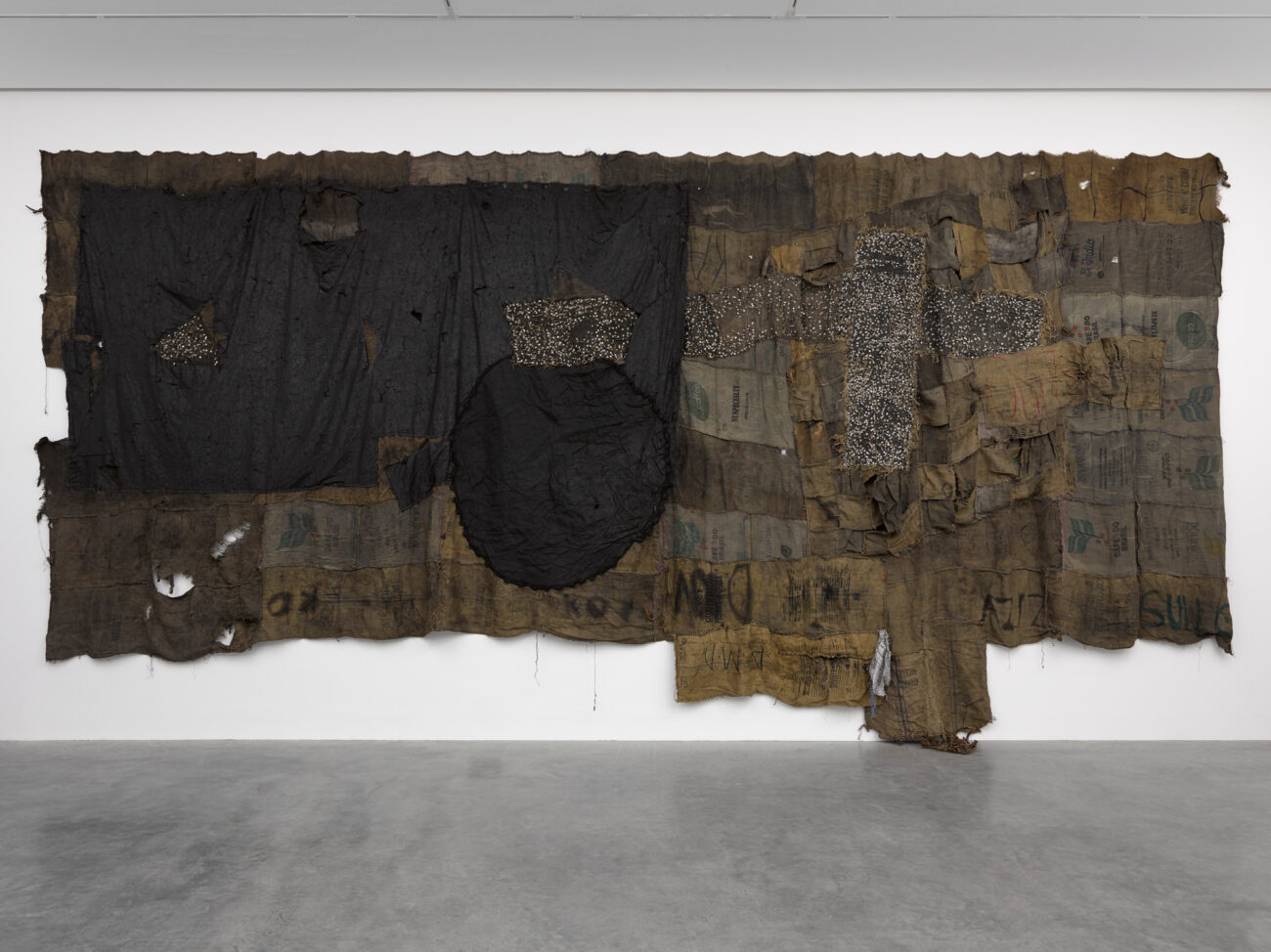
In Tia Collection’s painting Zizi Sullo (2016), Mahama wields the material’s history through his creative re-use of charcoal and coffee sacks that have been decorated by scrap metal tarpaulin and metal tags to serve as a commentary on the complex interplay between global forces and the local communities of Ghana. The work, which appeared in his first exhibition in the UK at White Cube titled Fragments (titled after Ghanian author Ayi Kwei Armah’s book of the same name), is an emblem of Mahama’s eye for the stories engrained in material, or in each fiber’s journey. The artist explains, “the hope is that their residues—stained, broken and abandoned, but bearing light—might lead us into new possibilities and spaces beyond.”
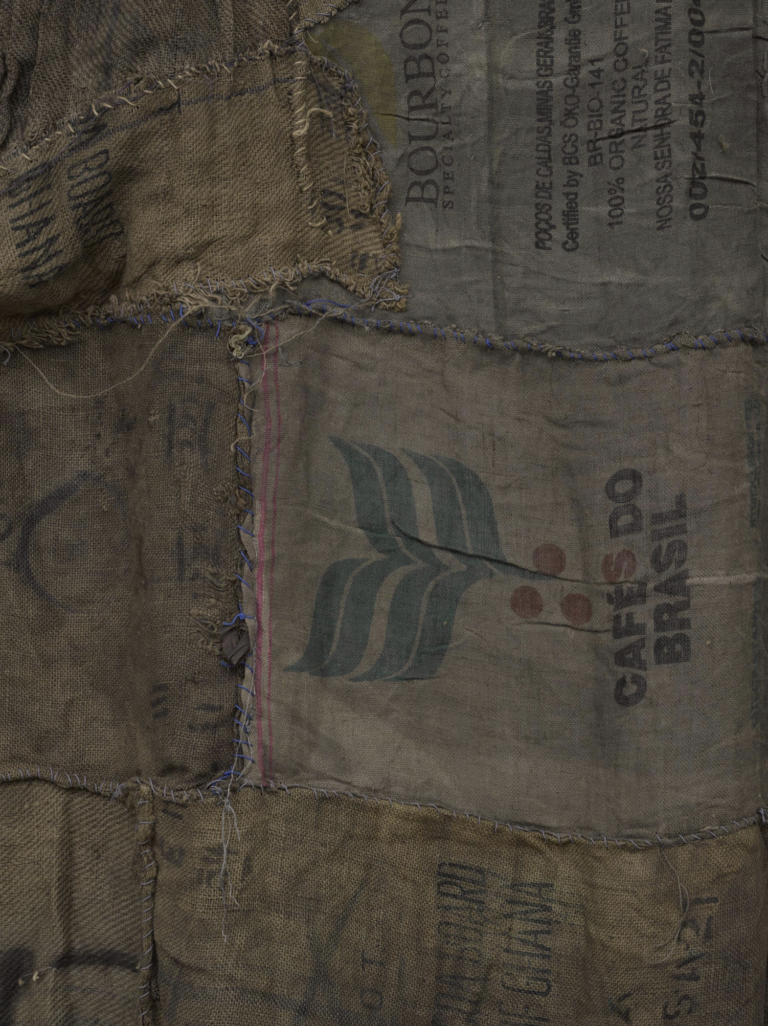
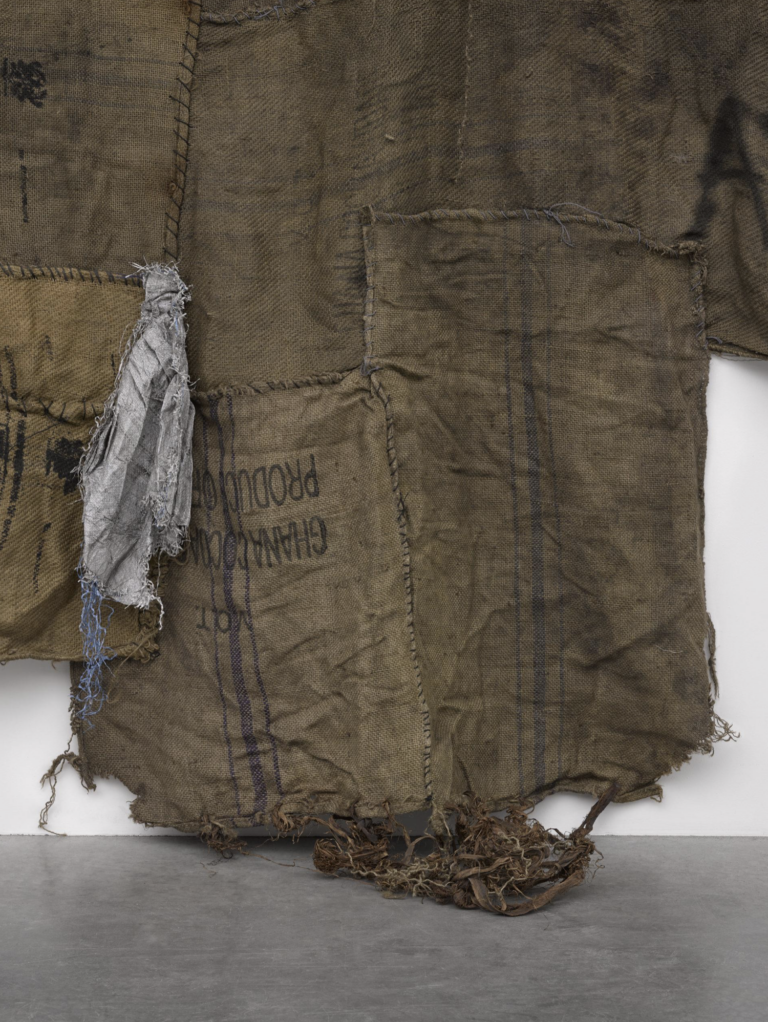
Throughout his work, Mahama draws inspiration from his personal experiences and observations of everyday life in Ghana—the bustling markets, informal economies and urban landscapes of his homeland— infusing his art with a sense of immediacy and authenticity. Mahama has had an outstanding 2023, ending the year with his curatorial and artistic visions visible at the Venice Architecture Biennale, the Bienal de São Paulo, the 35th Ljubljana Biennale of Graphic Arts (as artistic director) and the Chicago Architecture Biennial.
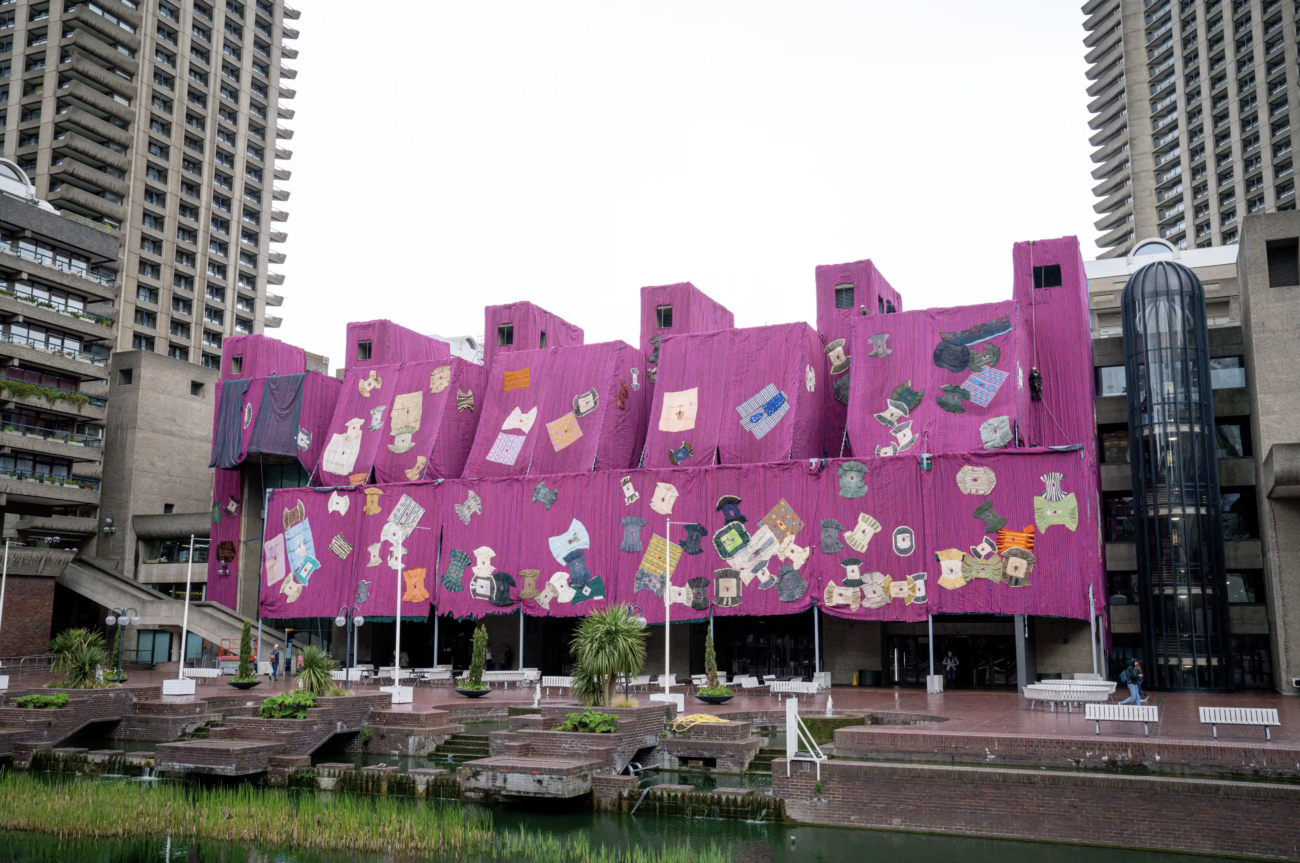
Tia Collection is proud to be a major supporter of the Barbican Centre’s most recent commission of Ibrahim Mahama: Purple Hibiscus. Blanketing the iconically Brutalist planes of the Barbican, the roughly 2,000 square meters of brilliantly-hued, hand-stitched cloth were created in collaboration with over 1,000 craftspeople from Tamale. Titled after Nigerian writer Chimamanda Ngozi Adichie’s debut 2003 novel, Mahama furthers his ethos of collaboration and collective championship of Pan-Africanism (Adichie’s novel of the same name has influenced a new generation of African novelists).
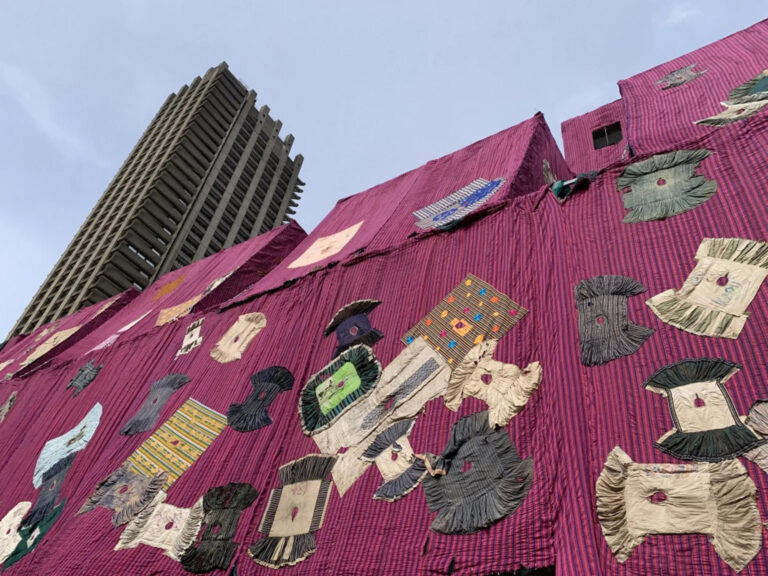
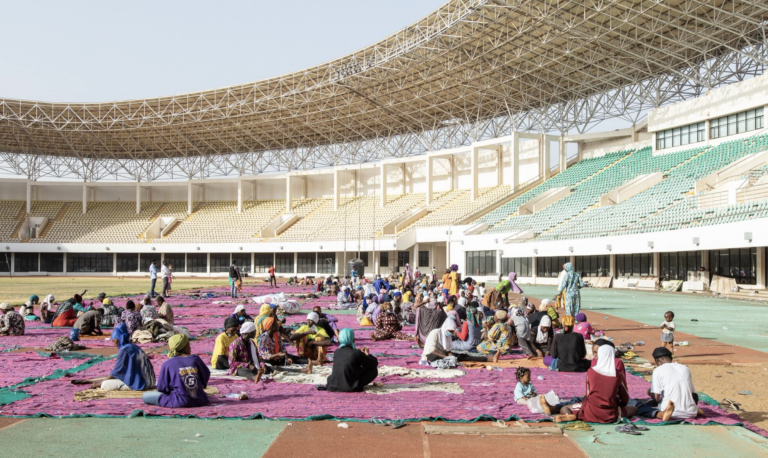
Mahama, interested in the life cycles of textiles and the historical memories embedded within their folds and threads, further underscores the bodies of all involved through the addition of second-hand garments. The mammoth panels of pink and purple are embroidered with more than 130 batakaris (a traditional men’s garment from West Africa). Often saved by families over generations, these precious textiles carry the imprints of the figures they once clothed, signifying the continued relevance of ancestral and intergenerational knowledge. The garments, collected by Mahama since 2012, are also a nod to London’s famous rag trade—including the city’s fabric merchants, tailors and dressmakers who once dominated the area where the Barbican Centre now stands.

In 2019/2020, Mahama founded several important art institutions in Tamale, Ghana by repurposing materials with little or no obvious remaining use, which is an integral part of his intrinsically sustainable practice. Savannah Centre for Contemporary Arts is a large complex housing Mahama’s studio workspace, Red Clay Studio (also open to the public), as well as exhibition areas, archives, libraries, film screening rooms and a large courtyard called the Parliament of Ghosts. Meanwhile, also scattered on the property are six defunct Soviet-era airplanes which were transformed into classrooms where schoolchildren attend drone-operating workshops, as well as drawing and coding classes.
He also acquired a silo, which had been unused in Tamale since the time of Kwame Nkrumah (Ghana’s first president following the country’s independence in 1957), renovated the decrepit building and re-opened the space as Nkrumah Volini, a cultural institution for locals. “I’m interested in the fact that these objects could perform different functions and allow for new ideas to sprout,” he says.
A key focus of Mahama’s career is making art accessible to everyone in unconventional ways, regardless of age or background, and introducing children and young people to a world of art and creativity, no matter where they live. As the youngest artist featured in the Ghana Pavilion at the 2019 Venice Biennale, Ibrahim Mahama stood out as a leading voice in contemporary African art, using his practice to shed light on pressing issues facing the continent while also celebrating its rich cultural heritage and resilience. His work served as a powerful testament to the transformative potential of art as a tool for social change and dialogue, building a legacy for future generations.
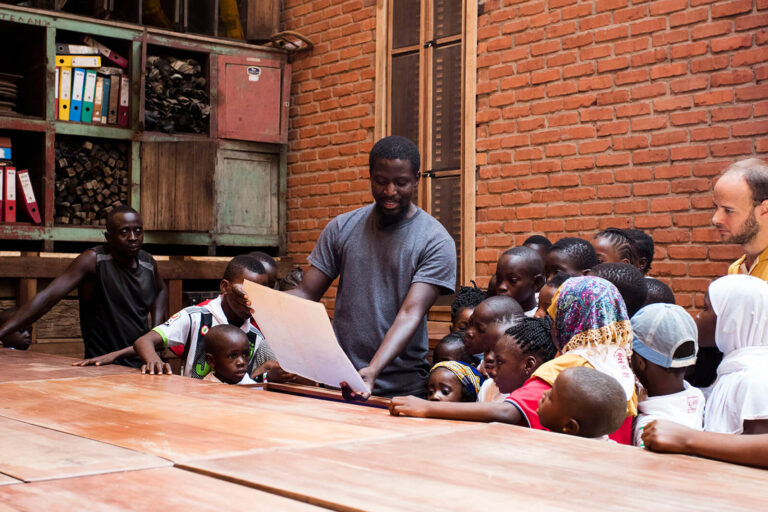
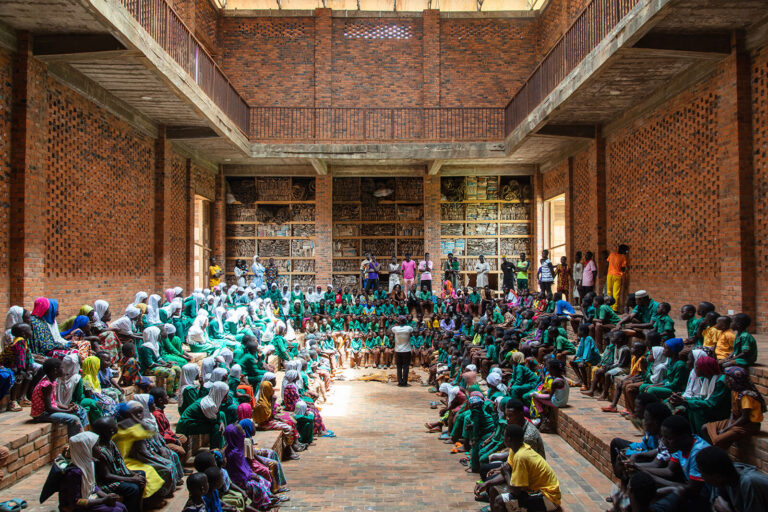
Written and designed by Sarah Greenwood.

